Lindsay Cronk
Where do you live: Currently based in Southern California
Your education: Self-taught artist; former journalist and corporate professional with a background in writing and communication
Describe your art in three words: Joyful · Emotional · Transformative
Your discipline: Painting (naïve)
Your work emerges from both chaos and resilience. How do you see the relationship between your mental health journey and the way your paintings come to life?
My paintings are born out of chaos, but they’re not about chaos—they’re about transforming it. Living with bipolar disorder means I experience both extremes: devastating lows and ecstatic highs. Painting became a kind of alchemy for me, a way to turn the emotional noise into color, shape, and joy. Every brushstroke is a negotiation between control and surrender. The act itself is healing—it’s how I stay tethered, how I make something beautiful out of the parts of myself that once felt unmanageable.
Flowers appear repeatedly in your work as symbols. What drew you to them, and how do they reflect your vision of fragile yet persistent beauty?
Flowers are the perfect metaphor for being human. They’re delicate and fleeting, but they insist on blooming anyway—often through cracks in concrete. I paint them not because they’re pretty, but because they’re defiant. They carry both joy and melancholy: they live briefly, yet they embody everything about growth, renewal, and grace. In my naïve art style, the flowers aren’t botanically correct; they’re emotional translations of how beauty feels when it’s hard-won.
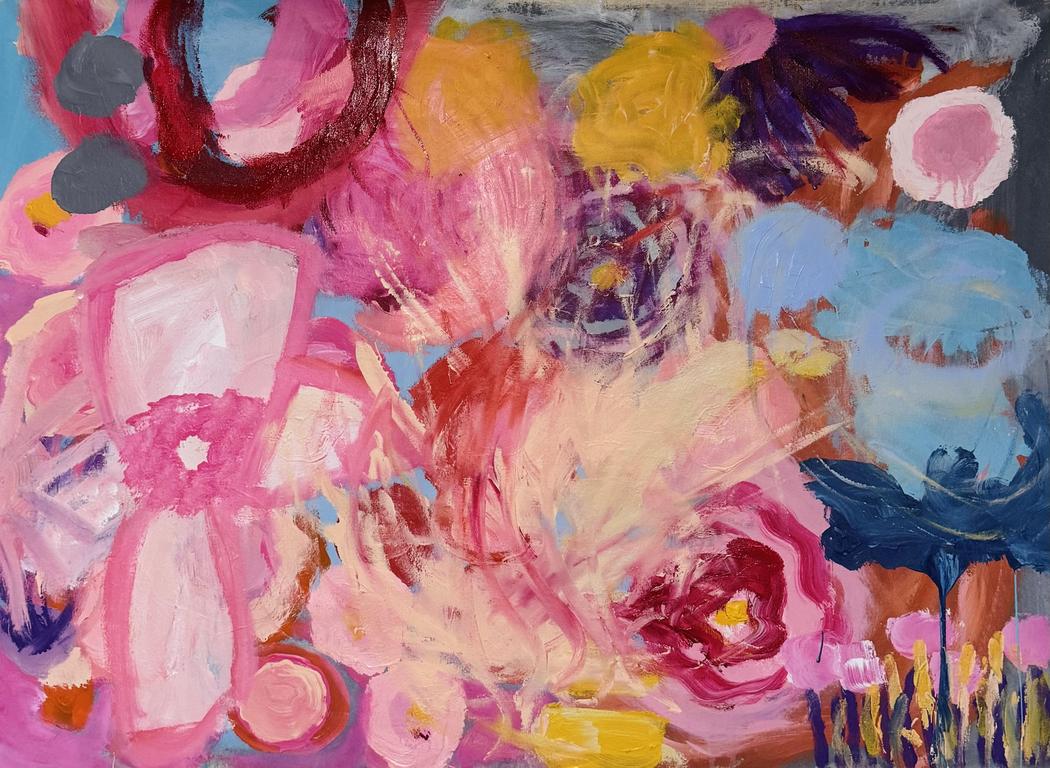
You describe your process as intuitive and unplanned. Can you walk us through what it feels like to begin a painting and allow it to “reveal itself”?
It feels like diving into a conversation with something unseen. I never start with a plan. I just start—throwing color, movement, and texture until the energy of the piece starts to take over. At some point, the painting begins to “speak back,” and I follow its lead. It’s instinctual. I know it’s done when it hums—when the balance between chaos and calm feels just right. I think that’s why my work feels alive: it’s as much about listening as it is about creating.
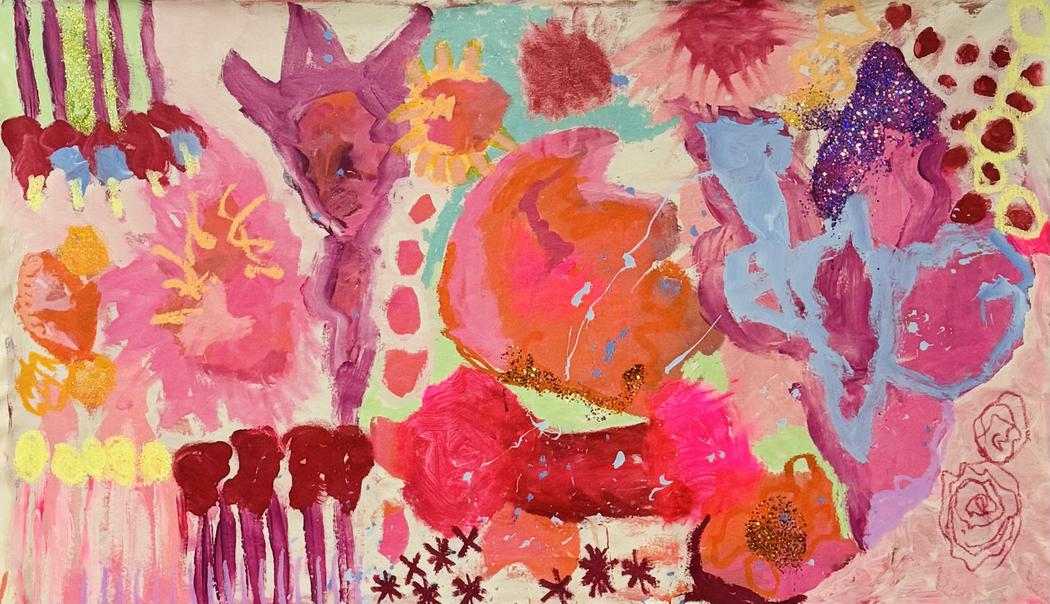
The titles of your works come from journal entries. How important is writing to your creative practice, and how does it connect to your painting?
Writing and painting come from the same impulse—to understand and to translate feeling into form. I’ve kept journals my whole life, especially during my bipolar cycles, and those entries hold raw truth. When I paint, that same voice comes through, just in color instead of words. The titles often come straight from my journals because they preserve the emotional DNA of the moment. Writing gives my paintings a heartbeat.
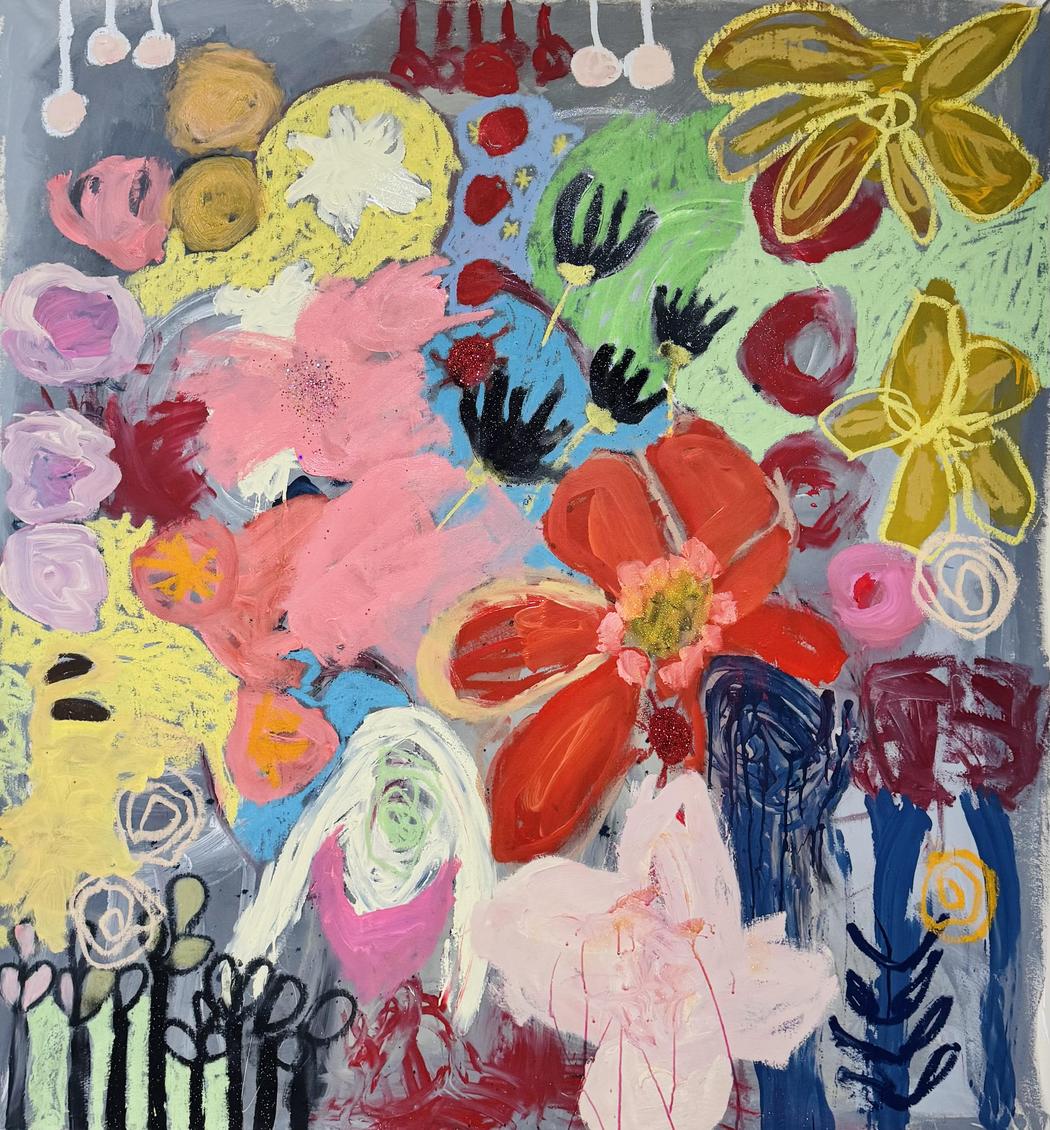
In your statement, you mention finding light even in the darkest places. How do you hope viewers will respond emotionally to your art?
I want my art to remind people that happiness is still available, even in the middle of pain. That joy isn’t the absence of darkness—it’s the decision to seek light anyway. My hope is that someone standing in front of one of my paintings feels a lift, even for a second. That maybe they see their own mess transformed into color and realize: beauty can come from brokenness.
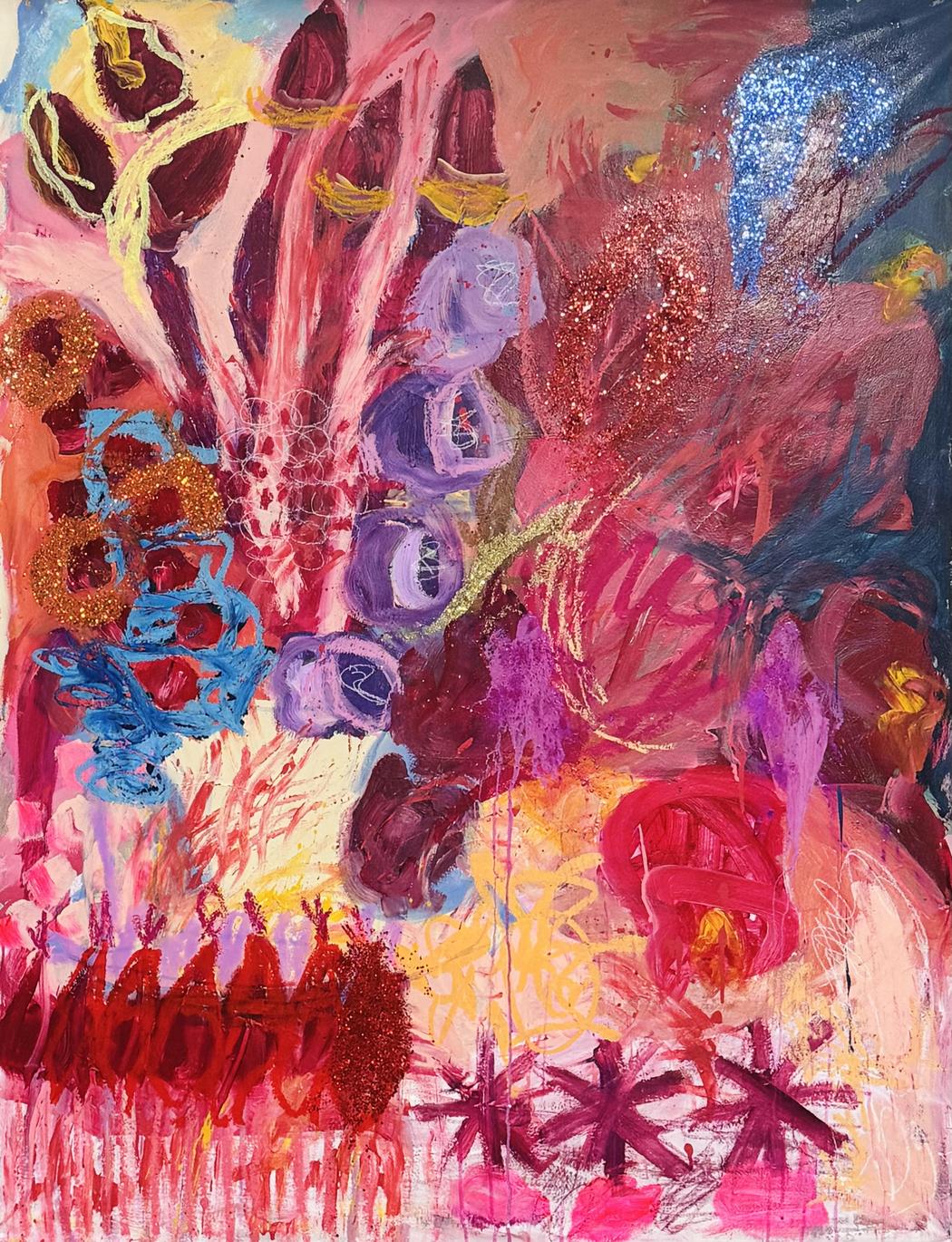
Color plays such a powerful role in your canvases—wild, vibrant, and almost explosive. Do you choose colors based on feeling, memory, or something else?
Color is my emotional language. I don’t choose it intellectually—it chooses me. Sometimes a color feels like a mood I can’t name, or like a note in music that resolves a dissonant chord. I use color to shift energy. There’s research about dopamine and bright hues affecting mood, and I love that connection—painting happiness chemically, not just symbolically. When I’m mixing paint, it’s like mixing emotion.
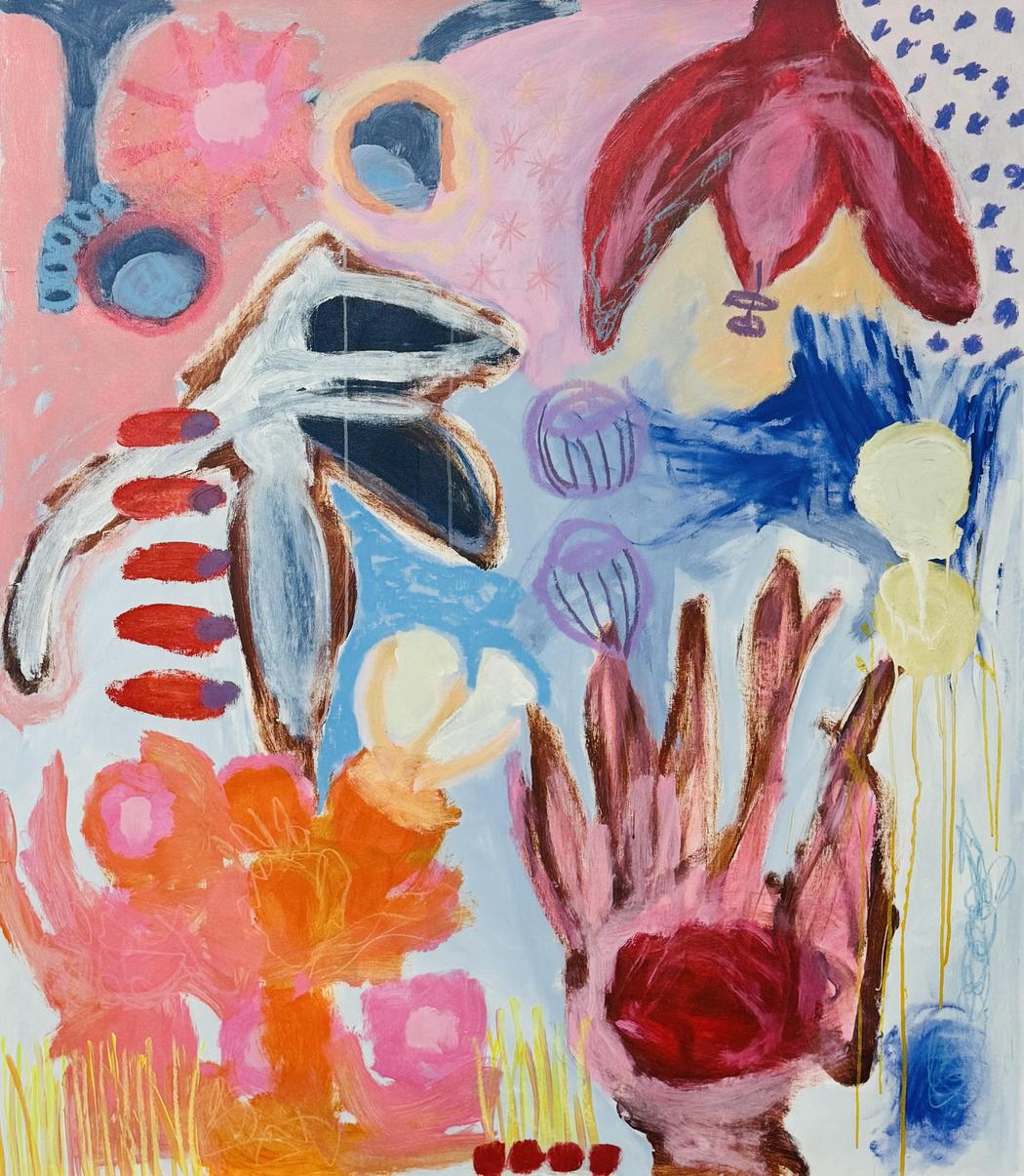
As a self-taught artist, what challenges have you faced and what freedoms do you feel this path has given you?
The biggest challenge is self-doubt—wondering if my lack of formal training makes me an outsider. But then again, that’s exactly what gives me freedom. I’m not bound by academic rules or trends. My naïve style is pure instinct. It allows me to paint like a child again—honestly, joyfully, without judgment. That’s the space where real art happens.

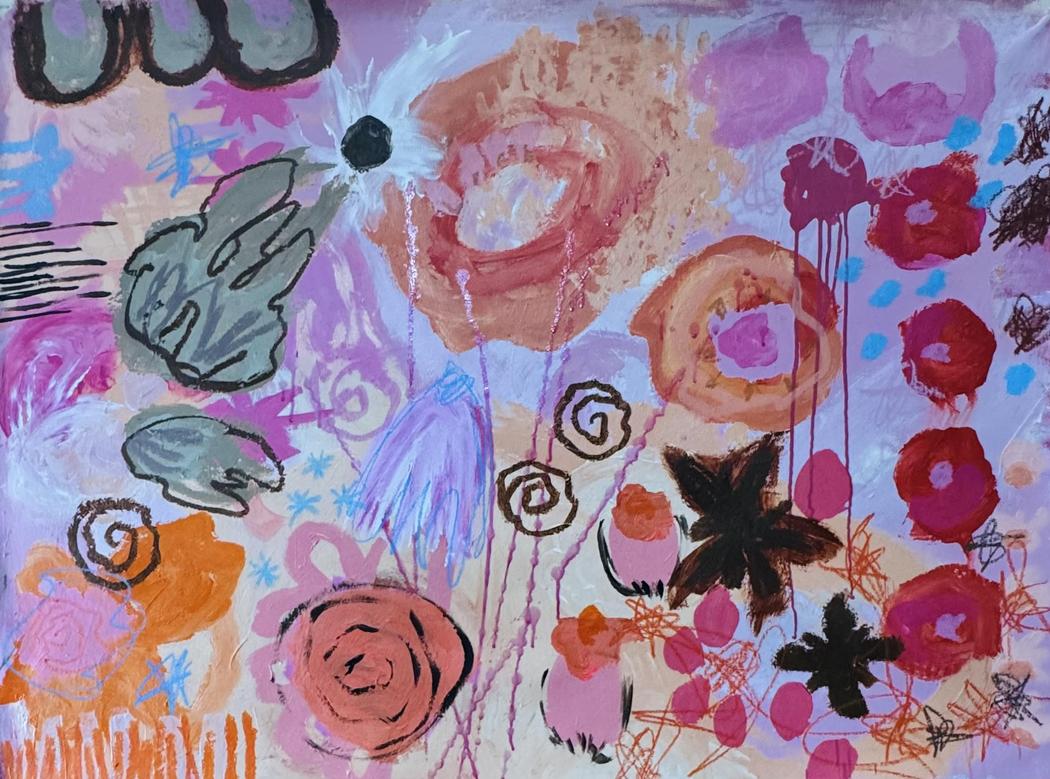
Leave a Reply